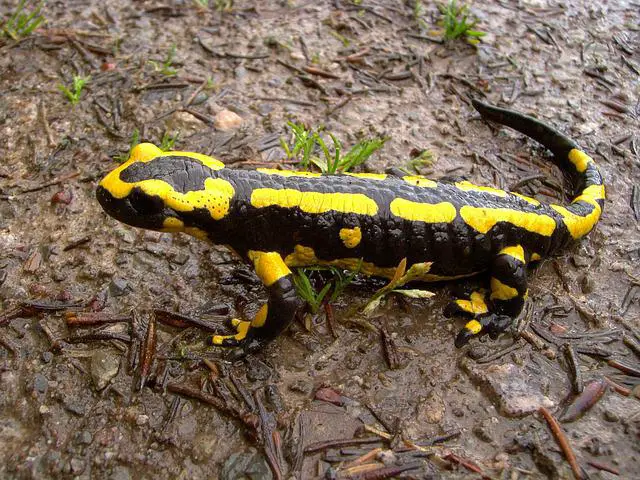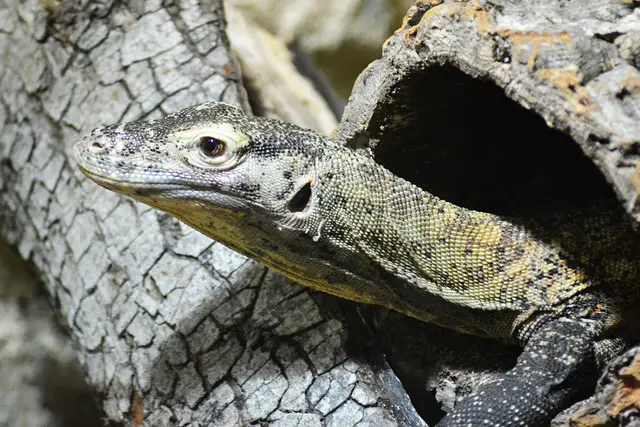Softshell turtles are a common sight in freshwater habitats across North America, and their unique appearance and behavior make them a popular choice for pet owners.
However, many wonder if these turtles are prone to biting and never letting go.
The short answer is yes, softshell turtles can bite and hold on tightly, but the bite’s severity depends on various factors.
One of the main reasons softshell turtles are known for their biting behavior is their powerful jaws.
These turtles have sharp beaks that can easily crush through shells, making them formidable predators in the wild.
When threatened or provoked, softshell turtles may use their jaws to defend themselves and hold on tightly to their prey or attacker.
However, not all softshell turtles exhibit this behavior; some may be more docile than others.
It’s important to note that softshell turtles are not naturally aggressive; they typically only bite when they feel threatened or scared.
In many cases, a softshell turtle may retreat into its shell or swim away if it feels threatened. However, suppose you are handling or attempting to feed a softshell turtle.
In that case, avoiding sudden movements or loud noises that could startle the turtle is essential.
By understanding the behavior of softshell turtles and taking appropriate precautions, you can safely enjoy these fascinating creatures in their natural habitat or your own home.
Soft Shell Turtles and Biting
Softshell turtles are known for their unique appearance and behavior. They have a flat, leathery shell that is flexible and lacks the rigid, bony plates found on other turtle species.
While they are generally docile creatures, softshell turtles are known to bite when they feel threatened or provoked.
Reasons for Biting
Softshell turtles may bite for a variety of reasons.
One common reason is self-defense. When they feel threatened, softshell turtles may bite to protect themselves.
This can happen if they are picked up, mismanaged, or feel cornered or trapped.
Another reason softshell turtles may bite is if they mistake a person’s fingers or toes for food. Softshell turtles are omnivores and will eat various foods, including insects, fish, and small mammals.
If they smell something they think is food, they may try to bite.
Bite Strength
Softshell turtles have strong jaws and can deliver a powerful bite.
While they are not as strong as other turtle species, such as snapping turtles, they can still cause injury if they bite and refuse to let go.
It is essential to handle softshell turtles with care and to avoid putting your fingers or toes near their mouths.
In conclusion, softshell turtles can bite and may do so if they feel threatened or mistake a person’s fingers or toes for food.
While they are not as strong as other turtle species, they can still cause injury if they bite and refuse to let go. Handling softshell turtles with care and respect is essential to avoid being bitten.
The Myth of Never Letting Go
Softshell turtles are known for their aggressive behavior and powerful jaws. Many people believe that once a softshell turtle bites, it will never let go, causing severe harm to the victim. However, this belief is mostly a myth.
Scientific Evidence
Studies have shown that softshell turtles, like other turtles, cannot lock their jaws. Once they bite, they can be easily pried off with minimal force.
Moreover, softshell turtles have a relatively weak bite force compared to other turtles and animals.
Anecdotal Accounts
While some people may have experienced a softshell turtle bite that seemed never to let go, these cases are likely due to a misunderstanding of the turtle’s behavior.
Softshell turtles are known to hold on to their prey for extended periods, but this is not because they cannot let go. Instead, they wait for the game to stop struggling before swallowing it whole.
In conclusion, while softshell turtles can be aggressive and have powerful jaws, the belief that they never let go once they bite is mostly a myth.
Scientific evidence shows they cannot lock their jaws, and the turtle’s natural behavior can explain anecdotal accounts.
Preventing Bites
Softshell turtles can bite if they feel threatened or provoked. While their bite is not usually dangerous, it can be painful and may result in injury.
Handling softshell turtles properly and creating a safe environment is essential to prevent bites.
Handling Techniques
When handling a softshell turtle, it is essential to approach it slowly and calmly. Grabbing or squeezing the turtle can cause it to feel threatened and may result in a bite.
Instead, gently pick up the turtle by its shell or use a towel or gloves to protect your hands.
It is also essential to properly support the turtle’s body when handling it. Softshell turtles have delicate necks, so avoid holding them by the head or neck.
Instead, support the turtle’s body with both hands and keep it close to your body to prevent it from thrashing around.
Creating a Safe Environment
Softshell turtles need a safe and comfortable environment to thrive. A proper enclosure should include a basking area, clean water, and appropriate substrate.
Providing hiding places and objects for the turtle to explore is also essential.
Avoid putting your fingers or other body parts near the turtle’s mouth to prevent bites. Keep a safe distance from the turtle when feeding it or cleaning its enclosure.
If you need to handle the turtle for any reason, make sure to do so carefully and with respect for its space.
Following these handling techniques and creating a safe environment can help prevent bites from softshell turtles. Always treat these animals carefully and respectfully to ensure their health and well-being.
Medical Attention for Turtle Bites
When bitten by a soft shell turtle, seeking medical attention is essential. While softshell turtles are not typically aggressive towards humans, they can bite if threatened or cornered. The bite of a softshell turtle can be painful and can cause injury.
The first step in treating a turtle bite is thoroughly cleaning the wound with soap and water. If the wound is bleeding heavily, apply pressure with a clean cloth until the bleeding stops. If the wound is deep or the bleeding does not stop, seek medical attention immediately.
Softshell turtles can carry bacteria and other microorganisms in their mouths that can cause infection. If the wound becomes red, swollen, or painful, or if the person develops a fever, they should seek medical attention. In some cases, antibiotics may be necessary to treat an infection.
It is important to note that softshell turtles are not venomous, so there is no need to worry about venom spreading through the body.
However, if a person has an allergic reaction to the bite, they should seek medical attention immediately. Symptoms of an allergic reaction can include difficulty breathing, swelling of the face or throat, and hives.
In summary, softshell turtles are not typically aggressive toward humans; their bites can cause injury and infection.
Thoroughly cleaning the wound and seeking medical attention if necessary can help prevent complications and ensure proper healing.
Understanding Soft Shell Turtles
General Characteristics
Softshell turtles are known for their leathery and flexible shells, which lack the bony plates found in other turtle species.
They are typically found in freshwater habitats such as rivers, lakes, and ponds, and in various colors, including brown, gray, and green.
Softshell turtles have a long and pointed snout, which they use to catch prey such as fish, insects, and crustaceans.
One of the most distinctive features of softshell turtles is their ability to bite and hold on to their prey for extended periods.
This is due to their powerful jaws and sharp teeth, adapted for tearing and crushing food. While softshell turtles are not typically aggressive towards humans, they may bite if threatened or mishandled.
Habitat and Behavior
Softshell turtles are found in many habitats, from slow-moving rivers to fast-flowing streams. They prefer sandy or muddy bottoms that provide cover and protection from predators.
Softshell turtles are also known for their ability to burrow into the sand or mud to escape extreme temperatures or to avoid predators.
Regarding behavior, softshell turtles are primarily active during the day and spend much of their time basking in the sun.
They are also known to be relatively social animals and can often swim and feed in groups. Softshell turtles can also vocalize and often make grunting or hissing sounds when threatened or disturbed.
Overall, softshell turtles are fascinating creatures that play an essential role in freshwater ecosystems. While they may be intimidating to some due to their biting ability, they are generally harmless to humans and should be respected and admired from a safe distance.
Conclusion
Softshell turtles are known to bite when they feel threatened or provoked. While their bites can be painful, they do not typically hold on for an extended period.
It is important to note that softshell turtles, like all animals, should be treated respectfully and given their space. Handling them can be dangerous and should only be done by experienced individuals.
If you are in a situation where a softshell turtle has bitten you, it is essential to remain calm and seek medical attention. In most cases, the bite will not cause serious harm, but it is always better to err on the side of caution.
Overall, while softshell turtles can bite, they are not considered to be aggressive animals. They can make fascinating pets or enjoyable wildlife sightings with proper care and handling.









